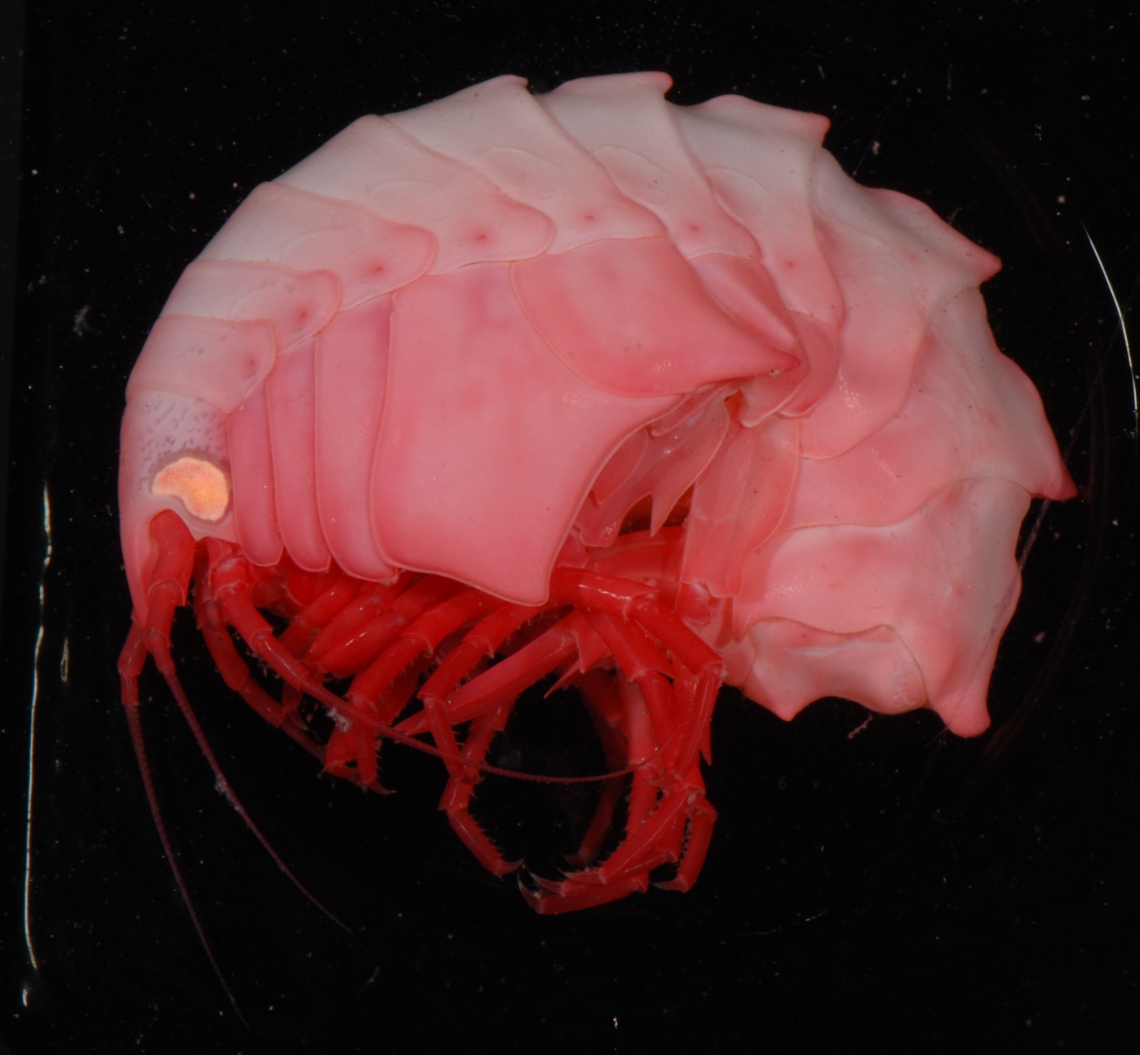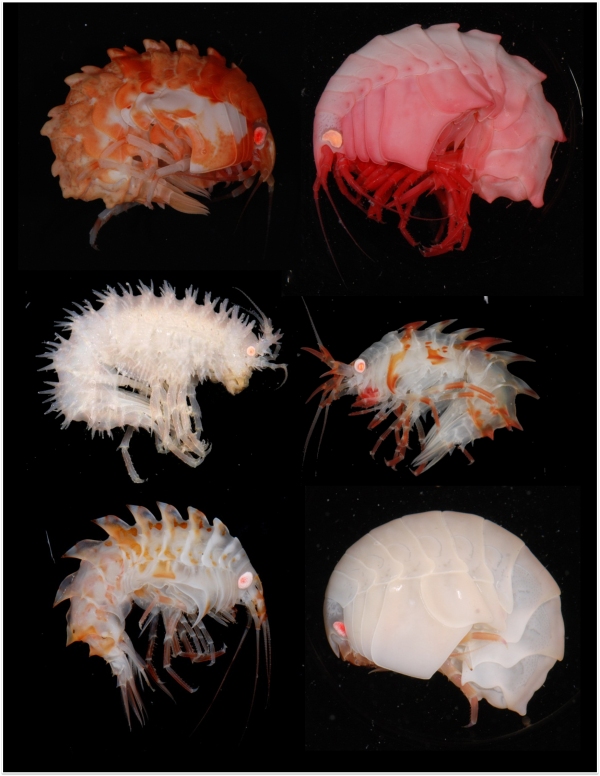Now in the Antarctic zone, our team currently on RV Tangaroa have been greeted with the breath-taking site of icebergs. It’s all hues of blue, grey and white above the waves but down at the bottom of the Southern ocean it’s a veritable treasure trove of pinks and reds! This hot pink gem is Epimeria larsi Lörz, 2009 described by our very own amphipod expert Anne-Nina Lörz and named after her husband Lars!
At 1950 m Epimeria larsi holds the deepest known species record for the genus, and was collected from the northern Ross Sea slope.
Back in 2013 in CotW 60 we first introduced you to the colourful and spiky Epimeriidae family that these gems of the deep (below) come from.
Twenty-seven species of Epimeriidae are known worldwide and they are mostly found in the Southern Ocean. Ten species of Epimeria are known from the Ross Sea but it is thought that with further investigation in the eastern Ross Sea or in areas below 2000 m there are potentially undiscovered species still to be revealed from this diverse and spectacular family (Lörz, 2009).
Interestingly Epimeria species show great variation in their feeding habits and their ability to move around on the seafloor. Many of them are opportunistic feeders, but some species are very sedentary and these species are more likely to be suspension feeders; while others are highly mobile and are these are more likely to be predators (Lörz & Brandt, 2004). This slow moving Epimeria robusta appears on the Royal Belgian Institute of Sciences webpage “Ant’phipoda” (dedicated to Antarctic amphipods), but it seems to be bucking the trend and preying on a brittlestar.
Reference: Lörz .A.-N. (2009) Synopsis of Amphipoda from two recent Ross Sea voyages with description of a new species of Epimeria (Epimeriidae, Amphipoda, Crustacea). Zootaxa 2167: 59–68.


